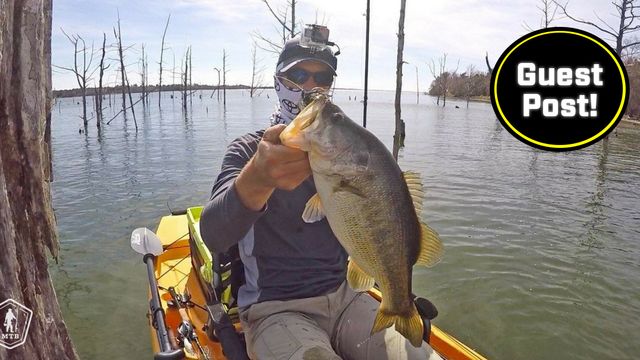
Fishing Cover: Breaking Down the 5 Most Common Types
This post was guest written by one of our team of fishing experts on The IU Bass Fishing Team. If you have other topics you want our experts to cover, send your questions and feedback to tips@mysterytacklebox.com!Fish are naturally attracted to fishing cover because it gives them a place to hide and be able to ambush prey. Cover also provides much needed cooler water for all types of fish, especially in the long, hot summer months. From the massive great lakes to the small ponds that occupy many of our towns, here is a breakdown of the top 5 most common types of fishing cover.
1. Fallen Timber/Laydowns
This is one of the most common and easiest types of cover to identify and fish when it comes to any type of pond/lake. Timber can vary from tree stumps sticking out of the water, entire logs, or large branches in isolated water. Bass cling to timber almost all year round, which is why anglers feel such confidence when attacking this type of cover. A common rig fished in all types of timber is any sort of jig. Flipping and pitching into timber whether it’s shallow or deep can trigger bigger bass to bite. Its bigger profile compared to a stick bait will trigger bites that will hook you up for those fights that you remember for a lifetime.
2. Fishing Cover Pads/Mats
Lily pads are perhaps the most fun fishing cover to work when it comes to exhilarating bites and fights on the water. Lily pads are pretty much a staple in most ponds and lakes throughout the country. Especially in the hot summer months, lethargic bass will often hang out under pads, waiting for meals to pass by. During the spring, I love throwing a bluegill square bill on the edges of pads, as bluegill drive spawning bass insane. Also, throwing a frog on pads never gets old. Using braided line and some heavier gear can make a difference between losing and landing a fish.
3. Docks
When it comes to big lakes, docks are a prime spot for bass to suspend almost all year long. Flipping and pitching around docks will consistently provide fish all year. In the summer months, many anglers often find success on beaver baits, tubes, and other soft plastics. During cold stretches, suspending jerk baits frequently provides bites as well, especially on larger lakes that see shad die offs when the water temps dip during winter into early spring.
4. Stumps
There are two reasons why stumps are great cover to fish. To start, the root systems of stumps are an ideal place for bass to hide and wait for bait to come by. Bass held in the roots of stumps are often looking for bottom feeding prey, such as craws, which is why many professional and recreational anglers kill it on a jig around stumps. Another reason stumps are essential, is how consistently they produce fish. Besides flipping and pitching, throwing any deflection baits can produce reaction bites. Many bass clinging to those stumps will see the flash and noise going by and instinctively react to it.
5. Matted Grass/Weeds
With the dramatic rise in the amount of grass in ponds and lakes across the country, grass has quickly become one of the most common types of cover. Weeds, such as Hydrilla, grow in columns from the bottom of ponds and lakes, limiting the amount of open water, but also creating loads of cover for fish. Fishing any type of plastic on a Texas Rig is effective. When the fish are feeding more aggressively, dragging a spinnerbait or chatterbait through that grass can draw fish out. In many lakes matted grass at the surface is also a common type of cover bass hide under. Fishing frogs along the edges and on top of the grass will trigger reaction bites.Author: Will Hogan, Indiana University Bass Fishing TeamFacebook/Instagram/Twitter: @iubfishingCheck Out The Indiana Bass Fishing Team Here
Updated January 25th, 2018 at 12:43 PM CT
